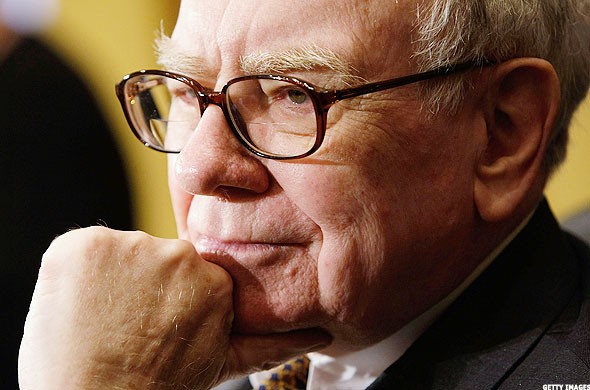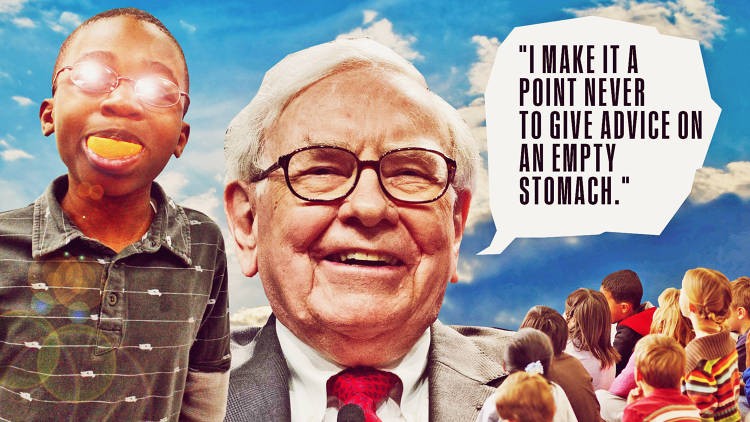2 Pieces of Timeless Investing Advice That Made Warren Buffett Who He Is Today
Post on: 22 Август, 2015 No Comment

2 Pieces of Timeless Investing Advice That Made Warren Buffett Who He Is Today
Whatever the occasion is, timeless investing advice would always be worth repeating. And, how much more “timeless” can a few pieces of investing wisdom be if they have existed since at least 1949 and yet has remained as a bedrock for billionaire investor Warren Buffett even today?
I’m talking about none other than Chapters 8 and 20 of Benjamin Graham’s legendary investment text The Intelligent Investor, which was first published in 1949. Here’s how Buffett described them in a 1998 lecture he gave:
“There’s a chapter 8 in Ben Graham’s Intelligent Investor about the attitude toward stock market fluctuations. That and the chapter 20 on the margin of safety are the two most important essays ever written on investing as far as I’m concerned.”
With such high praise coming from Buffett, who has built up a fortune worth more than US$70 billion today (according to Forbes ) through decades of astute investing, what exactly is found within these chapters?
Chapter 8: Handling market fluctuations
In here, Graham introduced the character of Mr. Market. I can’t word it better than Graham, so this is how he described it:
“Imagine that in some private business you own a small share that cost you $1,000. One of your partners, named Mr Market, is very obliging indeed. Every day he tells you what he thinks your interest is worth and furthermore offers either to buy you out or to sell you an additional interest on that basis.
Sometimes his idea of value appears plausible and justified by business developments and prospects as you know them. Often, on the other hand, Mr Market lets his enthusiasm or his fears run away with him, and the value he proposes seems to you a little short of silly.”
What Graham was really trying to say is this: The stock market tends to get carried away to extremes (this often happens!) but investors shouldn’t allow those fluctuations to dictate their buying or selling. Or, as Buffett once wrote, “Mr. Market is here to serve you, not to guide you.”
Keeping this in mind, investors should be buying or selling shares of a company based on the relationship between its share price and the value of its underlying business. Chasing stocks just because their prices are rising is a big no-no, just as selling them purely because their prices have fallen would be an act of folly.
Chapter 20: “Margin of Safety”
Graham found the concept of a “margin of safety” extremely important, so much so that he wrote the following in the first paragraph of chapter 20:
“Confronted with a like challenge to distil the secret of sound investment into three words, we venture the motto, MARGIN OF SAFETY.”
But what exactly is it? The following analogy might help: A group of engineers want to build a bridge where they know cars weighing 1,000 kg will be passing by it every day. Should they build the bridge to withstand 1,050 kg or 2,000 kg? If you answered the latter, then congratulations! You’ve understood what a margin of safety is.
It works the same way in investing. If you think a company can earn a profit of $1 per share the next year but you’d need it to earn $1.50 in profit in order to make a decent return on your investment, you have no margin of safety in place. But if you’ve set yourself up to make a good return even if the company would earn just $0.50 per share, that’s a healthy margin of safety you have there.
We got a taste of both sides of the coin with the margin of safety during the Great Financial Crisis.
Back then, prior to the crisis, when the Straits Times Index (SGX: ^STI) peaked on 10 October 2007, the property outfits City Developments Limited (SGX: C09) and CapitaLand Limited (SGX: C31) had share prices of S$16.30 and S$8.30 respectively. At those prices, the duo were valued at 3 times and 2.7 times their respective net asset values.
Unfortunately, those were valuations that hardly carried any margin of safety (if at all) and today, City Developments is worth $10.31 a share while CapitaLand is selling for S$3.59 a pop – in case you weren’t counting, that’s a 36% decline for the former, and a 57% fall for the latter.
But at the throes of the crisis when the Straits Times Index bottomed out in early March 2009, a huge margin of safety appeared with both City Developments and CapitaLand. The former, with a share price of S$4.07, was valued at just 0.68 times its net asset value; meanwhile, the latter had a price-to-book (PB) ratio of just 0.47 at its share price of S$1.79.
As you could probably already tell, that margin of safety has done wonders for the two real estate outfits with their share prices having doubled or more since the crisis’s trough.

A Fool’s take
These two pieces of timeless wisdom – the Mr. Market allegory and the concept of a margin of safety have served Buffett well for more than 50 years since he started investing. They are simple and basic, but it’s worth remembering that they will likely still remain sound principles for us to learn from even 50 years (or more) from now.
For more investing analyses and important updates about the stock market, sign up to The Motley Fool Singapore’s free weekly investing newsletter, Take Stock Singapore. Written by David Kuo, it can help you grow your wealth in the years ahead.
Like us on Facebook to follow our latest hot articles.
The Motley Fool’s purpose is to help the world invest, better .
Get FREE Issues of TAKE STOCK
By submitting your email address, you consent to us keeping you informed about updates to our website and about other products and services that we think might interest you. You can unsubscribe at any time. Please read our Privacy Statement and Terms of Service .
The information provided is for general information purposes only and is not intended to be personalised investment or financial advice. Motley Fool Singapore writer Chong Ser Jing doesn’t own shares in any companies mentioned.
Whatever the occasion is, timeless investing advice would always be worth repeating. And, how much more timeless can a few pieces of investing wisdom be if they have existed since at least 1949 and yet has remained as a bedrock for billionaire investor Warren Buffett even today?
Im talking about none other than Chapters 8 and 20 of Benjamin Grahams legendary investment text The Intelligent Investor, which was first published in 1949. Heres how Buffett described them in a 1998 lecture he gave:
Theres a chapter 8 in Ben Grahams Intelligent Investor about the attitude toward stock market fluctuations. That














